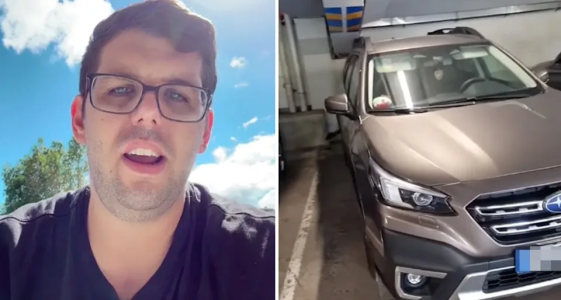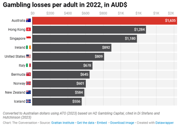Aussie drivers uncover little-known right after no-fault accidents
By
Gian T
- Replies 0
If you’ve ever been involved in a car accident that wasn’t your fault, you’ll know how stressful and inconvenient it can be.
Not only do you have to deal with the shock and paperwork, but you’re often left without a car while yours is being repaired, which can throw your whole routine into chaos.
But here’s something that might surprise you: most Australians don’t realise they have a powerful legal right that could save them thousands of dollars and a lot of hassle after a no-fault accident.
Thanks to a little-known road rule that's been around for decades, you could be entitled to a replacement car at no cost while yours is off the road.
According to Nicolas Rio, General Manager at Right2Drive, three out of four Aussies aren’t aware of their right to drive after a not-at-fault accident.
This right is based on the old legal principle of 'demurrage', originally from the shipping industry but has been upheld by the High Court of Australia for car accidents too.
So, what does this mean for you? If you’re in a crash and you’re not at fault, you’re legally entitled to be put back in the same position you were in before the accident.
That means you shouldn’t have to fork out for taxis, Uber, or go without a car while yours is being fixed–you can get a similar replacement vehicle, and the at-fault party’s insurer should cover the cost.
Companies like Right2Drive have helped over 300,000 drivers across Australia and New Zealand get a free loan car after a not-at-fault accident.
They provide you with a replacement vehicle and then chase up the at-fault driver’s insurance company for payment.
It’s a win-win: you stay mobile, and you don’t have to pay a cent.
But here’s the catch—you need to know your rights and ask for them! Many insurers won’t offer this upfront, and if you don’t know to ask, you could miss out.
Right2Drive’s data highlights some surprising insights into accident trends.
In New South Wales, car parks pose a greater risk than roundabouts, with crashes in car parks making up 14.7 per cent compared to just 5.6 per cent at roundabouts.
Rear-end collisions are the most frequent, accounting for nearly 34 per cent of all accidents.
Single-lane roads are also a major concern, responsible for almost a quarter of all crashes.
One simple tip to avoid being found at fault? Reverse into parking spots rather than out of them.
Insurance experts warn that if you reverse out of a spot and hit someone, you’ll almost always be deemed at fault.
But if you reverse in and drive out forward, you have a much better view and are less likely to be blamed if something goes wrong.
That said, there are exceptions. For example, if someone opens their car door into your reversing vehicle, they may be at fault instead.
Despite being a long-standing legal right, nearly 75 per cent of Aussie drivers are unaware of their entitlement to a replacement car after a no-fault accident.
Insurers don’t always advertise this, and many people simply accept the inconvenience of being without a car.
But knowledge is power! Next time you’re in a not-at-fault accident, remember to ask about your right to a replacement vehicle.
It could save you hundreds (or even thousands) in transport costs and keep your life running smoothly.
This week is National Road Safety Week, a timely reminder of the importance of safe driving and the impact of road trauma.
Professor Stuart Newstead from the Monash University Accident Research Centre points out that modern safety features in cars have dramatically reduced injuries and fatalities over the past 50 years.
However, there’s still more to be done, especially when it comes to encouraging safer vehicle choices for both young and older drivers.
Younger drivers, in particular, are often overrepresented in road fatalities because they tend to buy older, less safe cars.
If you’re helping a grandchild or family member choose their first car, encourage them to look for vehicles with up-to-date safety features—it could save their life.
After a not-at-fault accident, it’s important to stay calm and collect key details—get the other driver’s name, contact and insurance info, and take photos of the damage and scene.
Report the incident to your insurer and the police if needed. If you’re not at fault, ask your insurer about a replacement car or contact a provider like Right2Drive directly.
And remember, you shouldn’t have to cover costs or be left without transport if the accident wasn’t your fault.
 Have you ever used your right to a replacement car after a not-at-fault accident? Did you know about this rule before? Share your experiences and tips in the comments below – your story could help another member of the Seniors Discount Club!
Have you ever used your right to a replacement car after a not-at-fault accident? Did you know about this rule before? Share your experiences and tips in the comments below – your story could help another member of the Seniors Discount Club!
Not only do you have to deal with the shock and paperwork, but you’re often left without a car while yours is being repaired, which can throw your whole routine into chaos.
But here’s something that might surprise you: most Australians don’t realise they have a powerful legal right that could save them thousands of dollars and a lot of hassle after a no-fault accident.
Thanks to a little-known road rule that's been around for decades, you could be entitled to a replacement car at no cost while yours is off the road.
According to Nicolas Rio, General Manager at Right2Drive, three out of four Aussies aren’t aware of their right to drive after a not-at-fault accident.
This right is based on the old legal principle of 'demurrage', originally from the shipping industry but has been upheld by the High Court of Australia for car accidents too.
So, what does this mean for you? If you’re in a crash and you’re not at fault, you’re legally entitled to be put back in the same position you were in before the accident.
That means you shouldn’t have to fork out for taxis, Uber, or go without a car while yours is being fixed–you can get a similar replacement vehicle, and the at-fault party’s insurer should cover the cost.
Companies like Right2Drive have helped over 300,000 drivers across Australia and New Zealand get a free loan car after a not-at-fault accident.
They provide you with a replacement vehicle and then chase up the at-fault driver’s insurance company for payment.
It’s a win-win: you stay mobile, and you don’t have to pay a cent.
But here’s the catch—you need to know your rights and ask for them! Many insurers won’t offer this upfront, and if you don’t know to ask, you could miss out.
Right2Drive’s data highlights some surprising insights into accident trends.
In New South Wales, car parks pose a greater risk than roundabouts, with crashes in car parks making up 14.7 per cent compared to just 5.6 per cent at roundabouts.
Single-lane roads are also a major concern, responsible for almost a quarter of all crashes.
One simple tip to avoid being found at fault? Reverse into parking spots rather than out of them.
Insurance experts warn that if you reverse out of a spot and hit someone, you’ll almost always be deemed at fault.
But if you reverse in and drive out forward, you have a much better view and are less likely to be blamed if something goes wrong.
That said, there are exceptions. For example, if someone opens their car door into your reversing vehicle, they may be at fault instead.
Insurers don’t always advertise this, and many people simply accept the inconvenience of being without a car.
But knowledge is power! Next time you’re in a not-at-fault accident, remember to ask about your right to a replacement vehicle.
It could save you hundreds (or even thousands) in transport costs and keep your life running smoothly.
This week is National Road Safety Week, a timely reminder of the importance of safe driving and the impact of road trauma.
Professor Stuart Newstead from the Monash University Accident Research Centre points out that modern safety features in cars have dramatically reduced injuries and fatalities over the past 50 years.
However, there’s still more to be done, especially when it comes to encouraging safer vehicle choices for both young and older drivers.
Younger drivers, in particular, are often overrepresented in road fatalities because they tend to buy older, less safe cars.
If you’re helping a grandchild or family member choose their first car, encourage them to look for vehicles with up-to-date safety features—it could save their life.
After a not-at-fault accident, it’s important to stay calm and collect key details—get the other driver’s name, contact and insurance info, and take photos of the damage and scene.
Report the incident to your insurer and the police if needed. If you’re not at fault, ask your insurer about a replacement car or contact a provider like Right2Drive directly.
And remember, you shouldn’t have to cover costs or be left without transport if the accident wasn’t your fault.
Key Takeaways
- Most Australian drivers are unaware that if they're not at fault in a car accident, they’re legally entitled to a replacement vehicle while theirs is under repair.
- The law of demurrage allows not-at-fault drivers to be restored to their previous position, and companies like Right2Drive arrange free loan cars and recover costs from the at-fault party’s insurer.
- Data shows rear-end collisions are the most common accident type, and reversing drivers in car parks are usually deemed at fault unless specific circumstances apply.
- Vehicle safety advancements have reduced road trauma, but there’s still major potential to save lives by encouraging safer car choices, especially for younger and older drivers.








